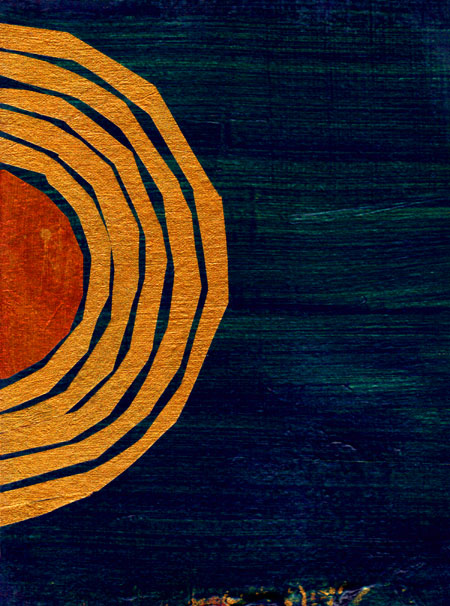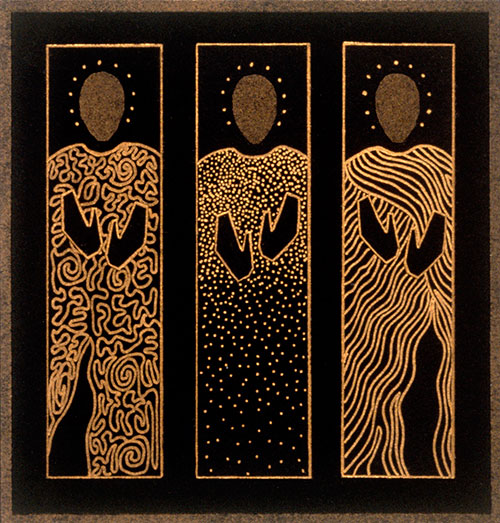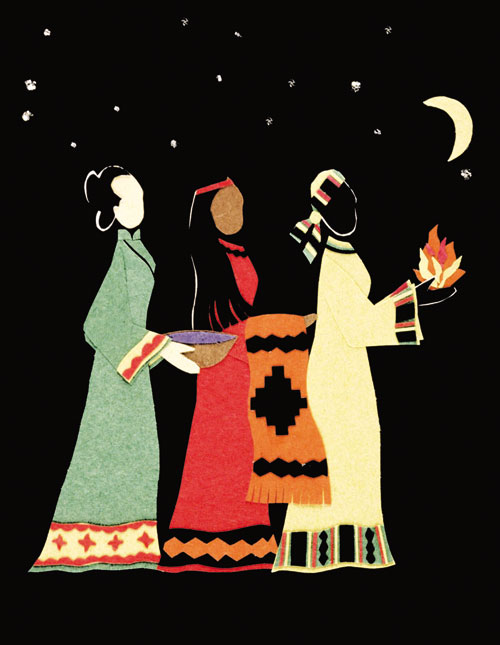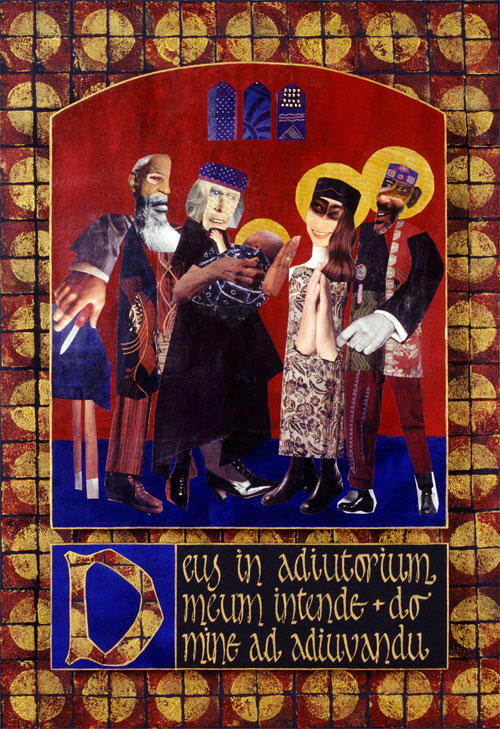 Image: An Ancient Light © Jan Richardson
Image: An Ancient Light © Jan Richardson
Reading from the Gospels, Epiphany ABC: Matthew 2.1-12
I love this time between Christmas Day and Epiphany. Although the prospect of moving beyond the holidays is always a bit poignant for me, I take comfort in knowing that the festival of Christmas lasts not for one day but for twelve, and there is still cause for celebration before we leave this season. This year in particular I am grateful for the opportunity to rest and reflect, and to do some dreaming as well as playing before I dive into the coming year.
In these blissfully quiet days, I have spent time curled up with a few books. One that I am especially savoring was a Christmas gift from my parents. Mapping the World: Stories of Geography, written by Caroline and Martine Laffon, is a beautifully produced book that traces some of the history of how we humans have sought to chart the universe, and our place within it, over millennia. With images of maps from ancient to contemporary times, the book reveals how maps are never neutral documents: they provide a glimpse of the beliefs, myths, legends, and sometimes prejudices of those who created them.
I have spent much time this year thinking about maps. In retreats, workshops, worship, and conversation, the question has surfaced again and again: In a world that we enter with no map in hand, no blueprint, no book of instructions, how do we find our way? In the Wellspring service, the contemplative worship gathering that Gary and I lead, we recently finished a five-part series titled “Mapping the Mysteries of Faith.” As we explored this theme and the questions that it stirred, the conversations we had at Wellspring were rich and refreshing. We didn’t leave with many answers—that’s not the point of the Wellspring service—but I found myself reminded once again of how crucial it is to have the company of wise travelers as we make our own maps.
With Epiphany on the horizon, I find myself thinking of the magi, those ancient travelers who went in search of the Christ. Wise to the heavens, they still possessed no map, no ready-made chart that laid out their course. As Matthew tells it, all that the magi had to illuminate their terrain and guide their way was a star. This was where their map began: with a burning light, with a step taken, with the company of others gazing in the same direction.
In that spirit, here’s a new poem. Composed while I was curled up among the books, it’s for Epiphany, and for you.
Where the Map Begins
This is not
any map you know.
Forget longitude.
Forget latitude.
Do not think
of distances
or of plotting
the most direct route.
Astrolabe, sextant, compass:
these will not help you here.
This is the map
that begins with a star.
This is the chart
that starts with fire,
with blazing,
with an ancient light
that has outlasted
generations, empires,
cultures, wars.
Look starward once,
then look away.
Close your eyes
and see how the map
begins to blossom
behind your lids,
how it constellates,
its lines stretching out
from where you stand.
You cannot see it all,
cannot divine the way
it will turn and spiral,
cannot perceive how
the road you walk
will lead you finally inside,
through the labyrinth
of your own heart
and belly
and lungs.
But step out
and you will know
what the wise who traveled
this path before you
knew:
the treasure in this map
is buried not at journey’s end
but at its beginning.
—Jan Richardson
As we travel through these Christmas days toward Epiphany and the coming year, where do you find yourself in your map? What are you giving your attention to? Are you looking in a direction that enables you to see possible paths? Is there a turn you need to take in your map? Where might you begin? Who can help?
As we travel toward Epiphany and beyond, blessings and good company to you.
[2016 update: The blessing “Where the Map Begins” appears in Jan’s new book, Circle of Grace: A Book of Blessings for the Seasons.]
For previous Epiphany reflections, visit Feast of the Epiphany: Blessing the House; Feast of the Epiphany: A Calendar of Kings; Inviting Epiphany; and The Feast of the Epiphany: Magi and Mystery.
[To use the image “An Ancient Light,” please visit this page at janrichardsonimages.com. Your use of janrichardsonimages.com helps make the ministry of The Painted Prayerbook possible. Thank you!]


















